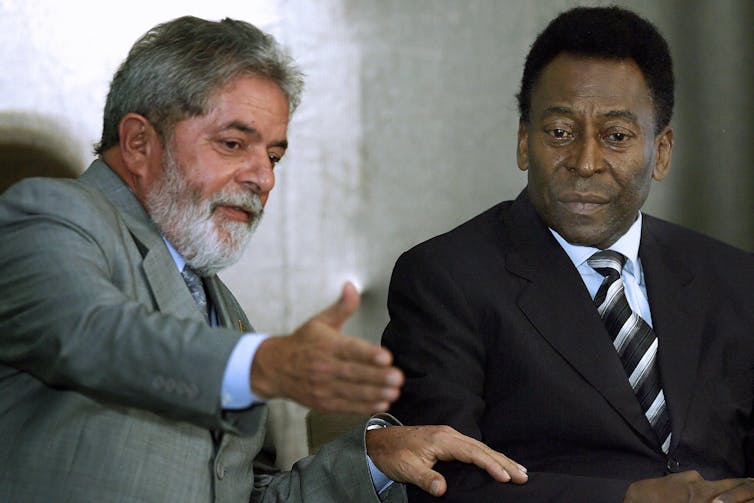As an intense political crisis engulfs Peru, the country’s beleaguered oil industry continues to suffer from conflict with local communities. For nearly three decades a swath of environmentally damaging oil spills, pipeline leaks, and other contaminating discharges have wreaked havoc on Peru’s Amazon Basin and coastline. This is driving anti-petroleum industry protests in Peru’s Amazon, many of which have turned violent, over the last decade leaving the industry in crisis. Those demonstrations are responsible for production outages, dwindling energy investment, and foreign energy companies withdrawing from Peru. The social license of Peru’s crisis-torn petroleum industry continues to deteriorate despite efforts by the national government in Lima to gain greater community cooperation and reboot operations. The latest political crisis, where tensions have boiled over into days-long violent anti-government demonstrations, since leftist President Pedro Castillo was arrested after attempting to dissolve congress, will sharply impact the petroleum industry which has long been an environmental disaster.
Oil spills remain a hazard in a country where environmental protection, especially of the Amazon, has not been a significant government priority for decades. Those spills and other environmentally damaging incidents are fueling community anger with Indigenous peoples claiming they are wreaking damage to their ancestral lands. According to a report from (Spanish) Oxfam and Peru’s National Coordinator for Human Rights (CNDDHH – Spanish initials), between 1997 and 2021 there have been 1002 oil spills in Peru with 566 in the Amazon and 404 on the coast. It is the 200,000 barrel-per-day Northern Peruvian Pipeline (ONP – Spanish initials), used to ship oil from the Amazon to the Pacific port city of Bayovar, that is drawing considerable negative attention. The Oxfam report shows that the ONP alone was responsible for 111 oil spills for the 24-year period starting in 1997.
The ONP’s latest oil spill occurred (Spanish) on 16 September 2022, when the pipeline spewed an estimated 2,500 barrels of crude into the Cuninico River a tributary of the Marañon, which is a river that eventually flows into the Amazon River. The crucial industry pipeline is owned by state-controlled Petroperu which in a statement (Spanish) claimed that the spill was the result of intentional damage or sabotage of the pipeline. The energy company asserts that the spill occurred because of a 21-centimeter cut that was made to the pipe. The ONP, which is the only effective means of transporting oil from the Amazon to the coast, has long been the target of sabotage. Peru’s National Society of Mining, Petroleum, and Energy claims the pipeline has suffered 29 such acts over the last nine years and various industry participants are blaming local Indigenous communities. Those spills have disrupted local water and food supplies including damaging regional fisheries as well as crops.
Such events are fueling considerable community anger and distrust which is being fanned by the perception that Lima is unwilling to address many of the deep-seated social and economic inequalities that exist in Peru’s Amazon. This is creating a tinderbox that regularly ignites unrest that includes anti-oil industry demonstrations, road blockades, seizures of pipeline pumphouses, and oilfield invasions. In response to the September 2022 spill, a river blockade was mobilized by the Asociacion Indigena de Desarrollo y Conservacion de Bajo Puinahua, a civil society and environmental protection coalition. That saw a boatload of tourists detained on 3 November 2022 only to be released the following day. Then on 25 November 2022, a barge traveling to Brazil carrying crude oil purchased from Canadian small-cap driller PetroTal was seized and the crew taken hostage, only to be released 48 hours later.
While the blockade was lifted on 14 December 2022 it sharply impacted operations at PetroTal’s Block 95, which contains the company’s flagship Bretana oilfield. The blockade forced PetroTal to sharply reduce production which from the end of November 2022 plunged to around 4,500 to 5,000 barrels per day, or roughly a third of the 14,000 barrels per day being pumped prior to the blockade. This event will impact Peru’s overall oil production because PetroTal, despite being a small-cap intermediate driller, is the Andean country’s largest oil producer. The region containing Block 95 has long been at the center of violent demonstrations against Peru’s oil industry. Some of the worst protests occurred in 2020 when the COVID-19 pandemic magnified many of the key issues and inequalities being experienced by Indigenous communities in Peru’s oil-rich Amazon. During August 2020, PetroTal was forced to shutter operations at the Bretana field after protestors attacked the ONP’s number 5 pump station and then violently clashed with police near the oilfield. The intensity of the skirmish left dozens injured among the police and demonstrators with three protestors later dying from their injuries. It wasn’t until 30 September 2020 that PetroTal was able to restart the Bretana field, while it took until 29 December for the ONP to restore full operations allowing PetroTal to recommence oil deliveries for sale in the pipeline.
The river blockade and earlier violent protests occurred because local Indigenous communities are seeking to pressure Lima into recognizing the severity of the oil spills and declaring a state of emergency. It is claimed that for many incidents the oil spills are not fully cleaned, and slicks linger contaminating water supplies and nearby land as well as damaging fisheries. The unraveling of the social license for Peru’s oil industry and the intensity of the community conflict in the Amazon saw energy companies abandon various blocks in the area. Canadian intermediate oil producer Frontera Energy abandoned Block 192 because of recurrent community blockades, while Chilean driller GeoPark handed Block 64 back to Peru’s government.
It is not only Peru’s Amazon that is being affected by oil spills and other industry-related environmental incidents. In January 2022, a pipeline being used for a routine tanker discharge at the Repsol-owned La Pampilla refinery, on Peru’s coast near Lima, ruptured spilling an estimated 10,000 to 12,000 barrels of crude oil into the Pacific Ocean. The spill, which is classified as Peru’s worst-ever coastal environmental disaster, left a deep slick on 25 beaches and polluted three marine reserves. This further tarnished the reputation of Peru’s already troubled oil industry leading to further community dissent and weighing heavily on its social license. For these reasons there is little respite ahead for Peru’s oil industry which has a long history of oil spills and environmental degradation which typically impact the Andean country’s poorest and most vulnerable communities.
By Matthew Smith for Oilprice.com











